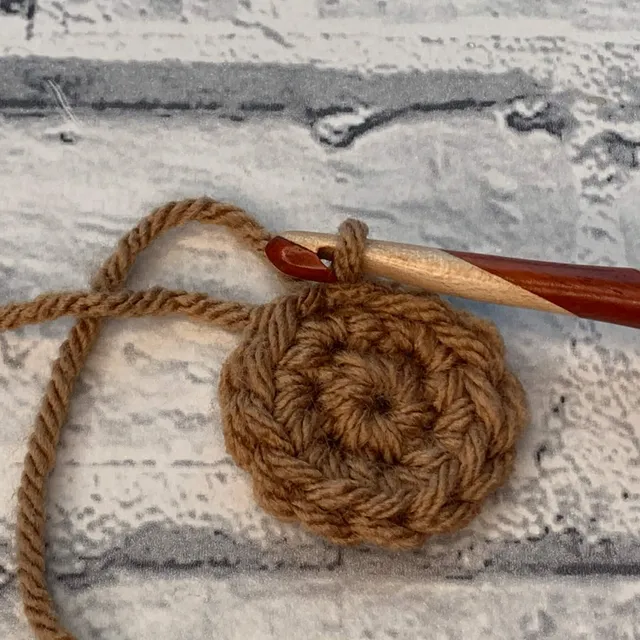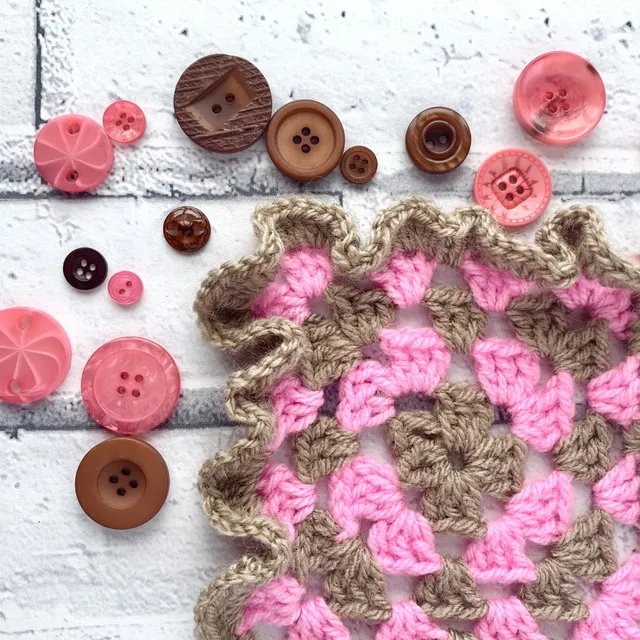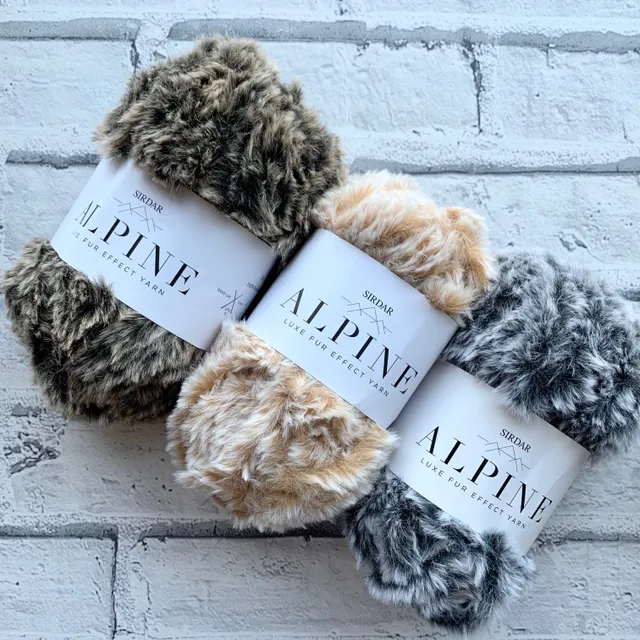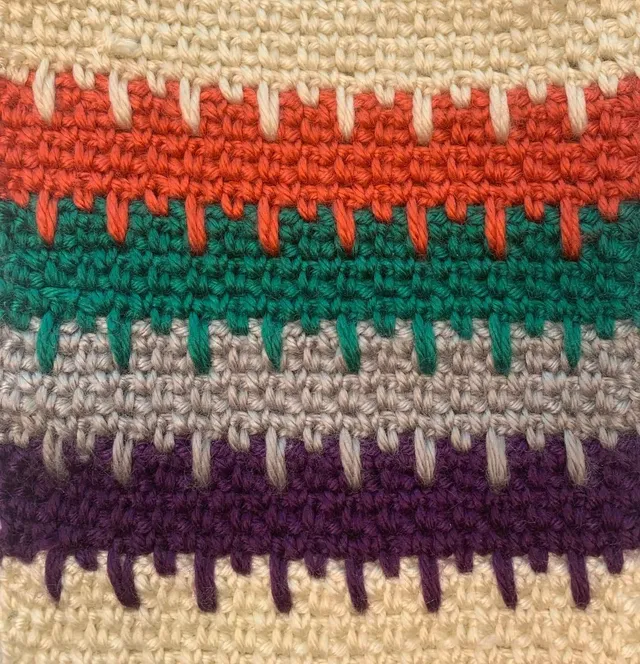Yarn Substitution Chart and Guide
Learn how to substitute yarn in a crochet pattern so you can find out what you can use instead of worsted yarn with this yarn substitution chart and guide that shows you the 4 things you need to consider when substituting yarn in a crochet pattern.
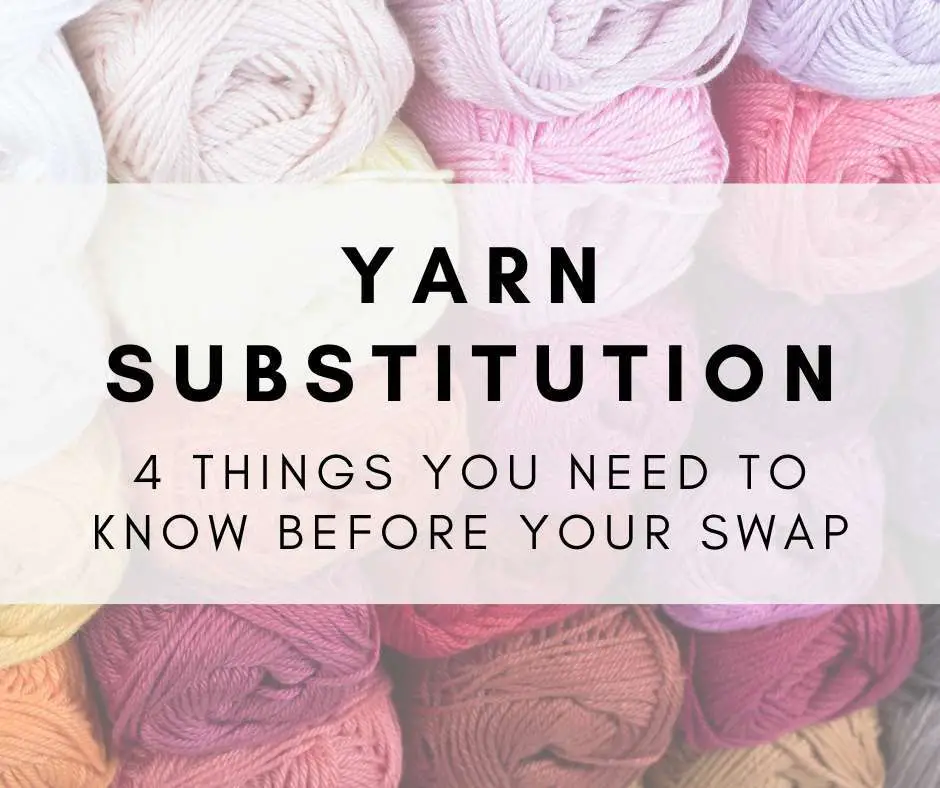
Yarn Substitution Chart & Guide
There are 4 important things to consider when substituting or changing the yarn that has been recommended in a crochet pattern.
In this article, you will find more information about each of these important considerations and a Yarn Substitution Chart that will help you change the yarn weight in a crochet project with confidence.
There are many reasons as to why you might need to change or swap your yarn:
- The recommended yarn in a crochet pattern has been discontinued
- You can an not purchase the yarn in your country
- The shade of yarn you want isn’t available
- You have a sizable yarn stash and you can’t justify buying more
- You can to use a different weight yarn to create a lighter finished project
- You want to use a yarn in a different fibre than recommended
Whatever the reason, to ensure that you are happy with the finished project, let’s look at the 4 things we need to check before we substitute and find out the easy way to find all the information we need about the yarn we want to use.
Please note that some of the links in my blog are affiliate links. I may earn a small commission if you purchase via this links, but the price you pay is not affected
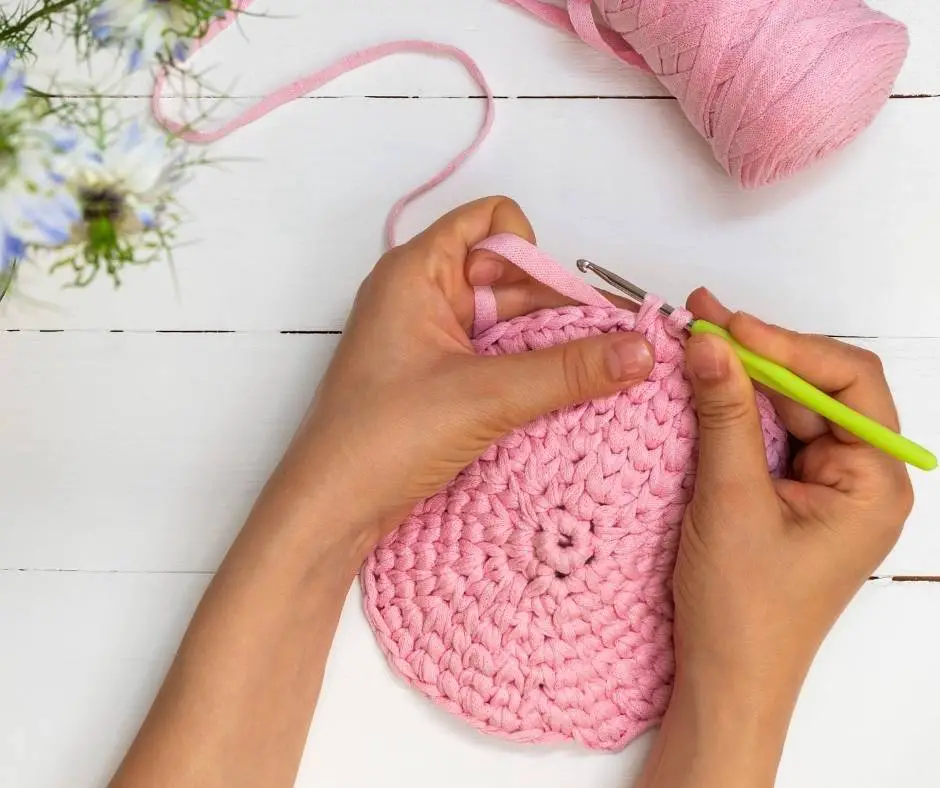
4 Things to Consider when Substituting Yarn in a Crochet Pattern
Here are the 4 things you need to look for when substituting the yarn in a pattern and the impact that can have on your finished project, which will be covered in this article so you can make the change to your yarn and get started on your next crochet project.
- Yarn weight
- Hook Size
- Yarn Fibre
- Tension
It’s important to remember that a crochet pattern is written for you to recreate the crochet designers finished project.
This doesn’t mean you can’t put your own spin on it and changing the yarn can be a great way to make the project your own.
Within crochet patterns, there is so much important information included to help you recreate the pattern including:
- Yarn including size and fibre content
- Hook size used
- Gauge
- Finished size
If you chose or need to use a different yarn to the one suggested in the pattern, the information provided in the pattern might change.
Most importantly, without care and attention, you could change the finished size – not what you want if you are making a garment.
Yarn Weight | Yarn Substitution Chart & Guide
There are instances when increasing the size of your crochet project is exactly what you want to achieve.
A great example of how the size of your yarn can make a different is taking a cute Amigurumi pattern and swapping out the DK/Size 3 yarn that’s recommended, and recreating the project using super chunky blanket yarn – the end result will be a cuddly and HUGE Ami project.
However, when you’ve spent hours and weeks stitching up a sweater, you want to ensure that the yarn your using won’t create an ill fitting finished project.
Let’s look at one of the most common questions around substituting yarn:
Can I use a different weight yarn for my project?
Yarn weights are named and referred to differently across the world, but one important thing to note is that yarn weight doesn’t relate to the actual grams or ounces in the skein; it means the number of plys or strands of yarn or fibre that the skein is made of.
Substituting a yarn for a heavier or larger weight yarn will make the finished project bigger. Likewise, if you opt for a smaller or lighter weight yarn, the finished project will be smaller that the finished size provided in the pattern.
One name exchange between yarn sizes that always pops into my head is the difference between Aran weight yarn in the UK and Worsted weight yarn in the USA.
In theory, they are pretty much the same; except they can differ in physical size a little.
Worsted weight is also known as size 4, can also be sized right in the middle of a UK chunky and an Aran weight yarn.
Already, you can see that there are 2 ways in which yarn is sized in America which is known as something else in the UK and has another name in Australian sizes:
- Worsted equals a Size 4 in the US
- Aran in the UK
- 10 ply in Australia
I will happily admit that I still get confused by the Australian way of sizing yarn, although, it is quite self explanatory.
Instead of using a weight system with random names, they simply size the yarn based on the ply of the yarn.
An Aran/Worsted weight yarn has 10 ply’s (number of strands). If a yarn is a 4 ply in the UK, a 5 ply in Australia, or a Sport in America.
My oh my – is this getting any clearer?
Possibly not, which is why you can find my Yarn Substitution Chart linked below for an instant download at the bottom of this article which has all 3 way’s yarn is sized, so you can easily swap your yarn for a same sized yarn.
When substituting yarn, it’s best to stick to the same yarn size whenever possible. You can change the yarn size, but if you want to achieve the same finished size, you will need to gauge the new yarn choice and adjust the pattern and number of stitches before you start.
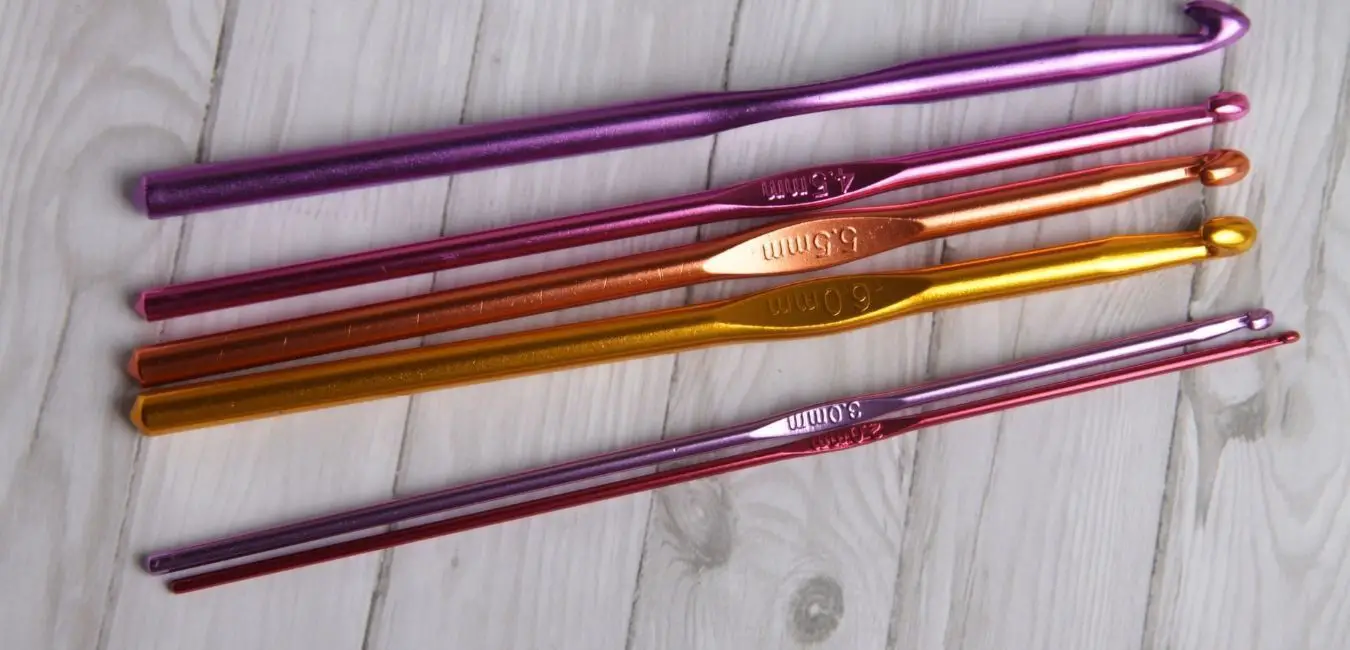
Hook Size | Yarn Substitution Chart & Guide
All the information on the yarn band is important, but there are a couple of areas that can help us when it comes to yarn substitution.
The first is the recommended hook size on the yarn band. If the yarn in the crochet pattern recommends a yarn with a 4mm hook size, most yarns that also recommend the same hook size will work with that pattern.
It’s not a foolproof way of checking, but it’s an excellent starting point when comparing yarns for substitution.
In the video linked above, I mention a couple of yarns including Paintbox Yarns, Simply DK and Lion Brand Coboo which are both marked as a DK weight yarn (size 3):
- Paintbox Simply DK recommends a 4mm hook
- Lion Brand Coboo recommends also recommends a 4mm hook
This means that these yarn can be substituted quite easily.
The other example in the video is comparing the Paintbox to WeCrochet Cotlin:
- Paintbox Simply DK recommends a 4mm hook
- WeCrochet CotLin recommends a 4.5mm-5.5mm
This means that even though they are marked as the same sized yarn, they will stitch up differently.
In fact, if you were to work the same stitch pattern, using the same sized hook in both of these yarns, the Cotlin would work up much stiffer, and not show the yarn off to it’s best.
The reason that these yarns will stitch up differently, is another important consideration when substituting yarns…
Yarn Fibre | Yarn Substitution Chart & Guide
All yarns are made from spun fibres and the fibre you choose to make your projects will can be personal preference through to considering the fibres qualities and the end result of your crochet project.
Yarn fibres can be manmade, natural or animal derived as show in these examples.
Manmade:
- Polyester
- Acrylic
- Nylon
Natural or Plant derived:
- Cotton
- Bamboo
- Hemp
Animal Derived (Wool):
- Sheep
- Alpaca
- Angora
This is no means a complete list of all the fibres available, that would be some list!
There are also lots of yarns that contain blends of different fibres to make the most of the fibre qualities.
There are so many reasons as to why you may want to choose to make a project in a different fibre. The most common one is to avoid wool or wool content as you find it scratchy, or perhaps you want to recreate a winter cardigan in a lighter fabric so it can be worn in warmer weather.
Changing the fibre the yarn is made from can have an impact on many factors of your finished project including:
- Drape (movement and stiffness of the crochet fabric)
- Longevity of the finished project e.g. piling
- Feel e.g. softness
- Warmth
When substituting yarn, ideally, you should aim to choose a yarn with the same fibre or similar fibre properties as the one recommended in the pattern unless it is not suitable for you.
Take care when swapping yarn fibres for a crochet garment such as a sweater or top, as the drape created by the yarn may differ and the finished project may not sit as well when worn.
Tension | Yarn Substitution Chart & Guide
The only way to ensure that a substituted yarn will recreate the a crochet pattern as written, is to create a tension swatch with the substituted yarn.
I know that making a gauge swatch and checking your tension is not many crocheters favourite thing to do, but there are times when it is absolutely essential.
Another quick way to compare yarns when substituting is to find the recommended yarn gauge on the yarn band. It there will be estimates of how many stitches and rows there are within a 4 inch/10cm square.
When substituting, you are looking for little or no change in either the row count or the stitch count within that 4 in square to ensure that the yarn works up similarly.
You can find the information about the standard gauge for a yarn both on the yarn ball and detailed in the yarns specifications online.
It’s worth noting that the stitch used for the recommended yarn gauge is with the suggested knitting needle and crochet hook size in knit or us single crochet.
If you are making a crochet garment or any other item that has a size and will be worn, this is one time that you really must create a tension swatch and compare the gauge to that in the pattern to ensure that the pattern will finish in the same size.
If you need to adjust the tension in your gauge swatch, click here.
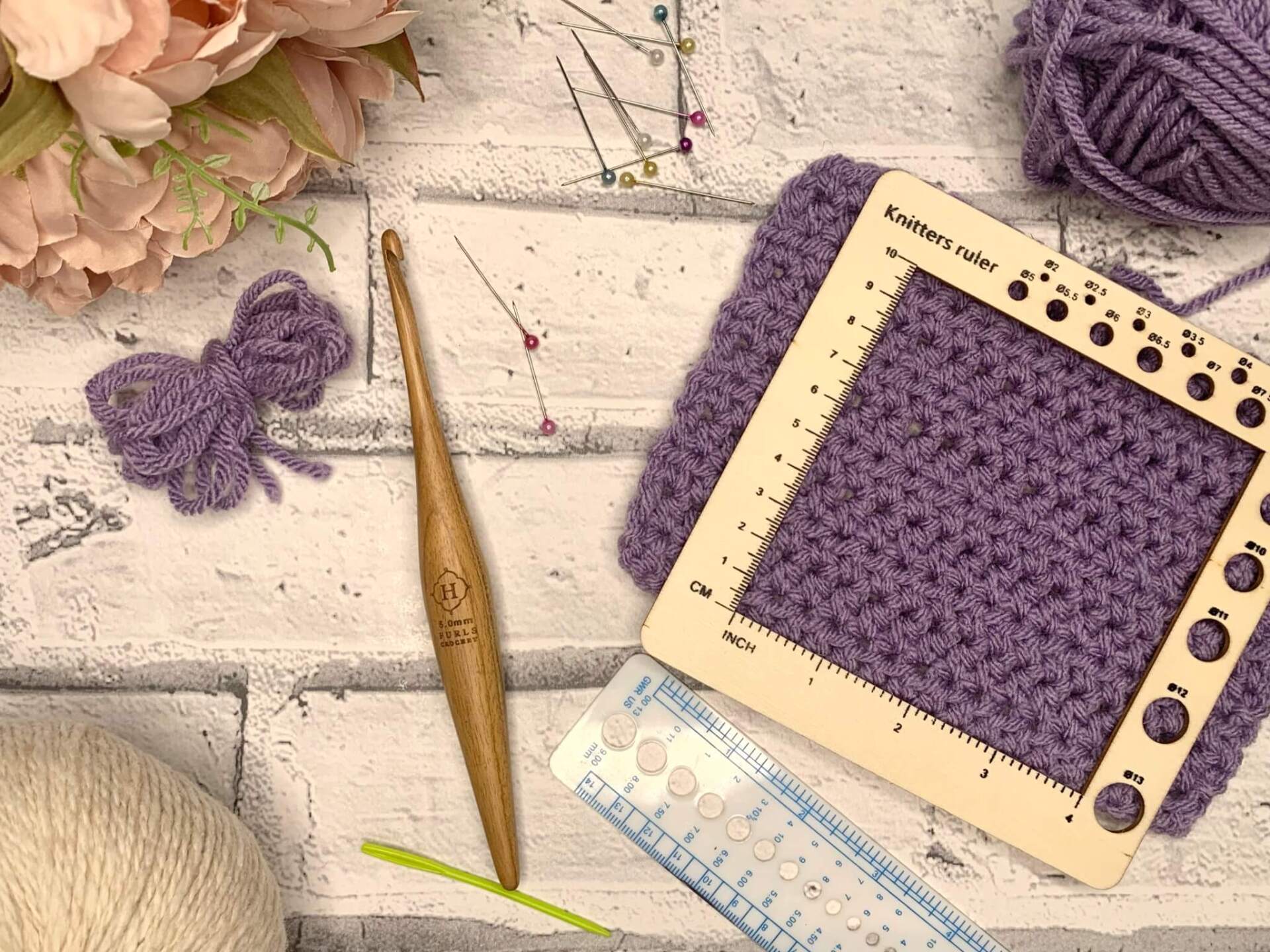
One final little nugget of information to consider when substituting yarns, is the Yarn Halo.
If you’re not familiar with this term, it relates to fuzziness around a strand of yarn. All yarns have a halo. Some are tiny like that around mercerised cotton, compared to a mohair.
It’s important to note as the yarn halo can create more pilling when a project is used or worn.
The Easiest Way to Substitute Yarn
There is one website that I highly recommend that can make substituting yarn simple:
The website allows you to input the name of the yarn recommended in a pattern and has a database which then compares all 4 things to consider when substituting yarn, and suggests relevant alternative yarns. It then scores then on the closest matches making yarn substitution easy!
Click the link above and see what yarns are comparable to your favourite. Maybe you’ll find a new yarn to try!
I’d love to know about the times you have substituted yarns, either successfully or not so successfully. Drop me an email or tag me on social media @cosyrosieuk.




